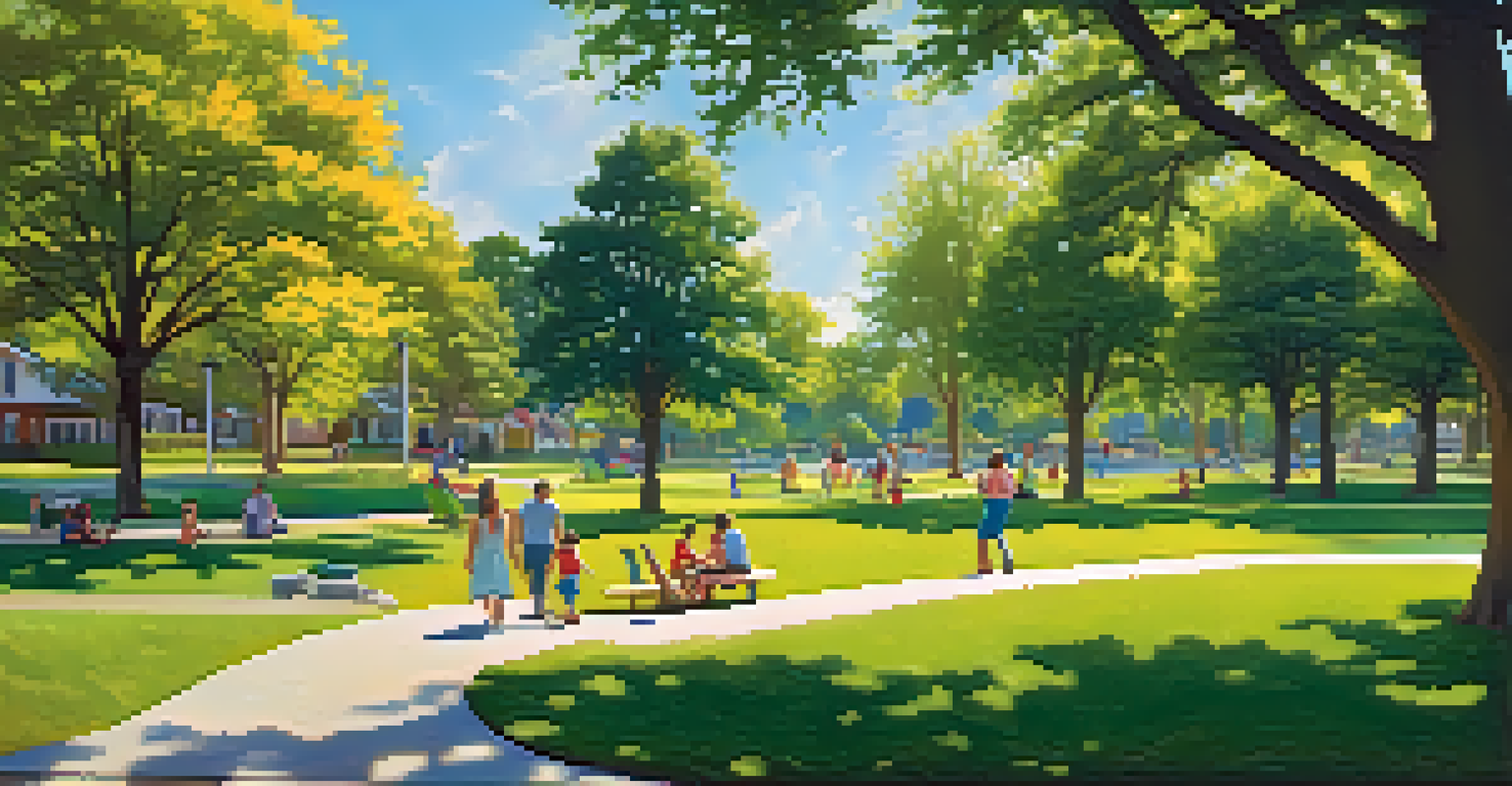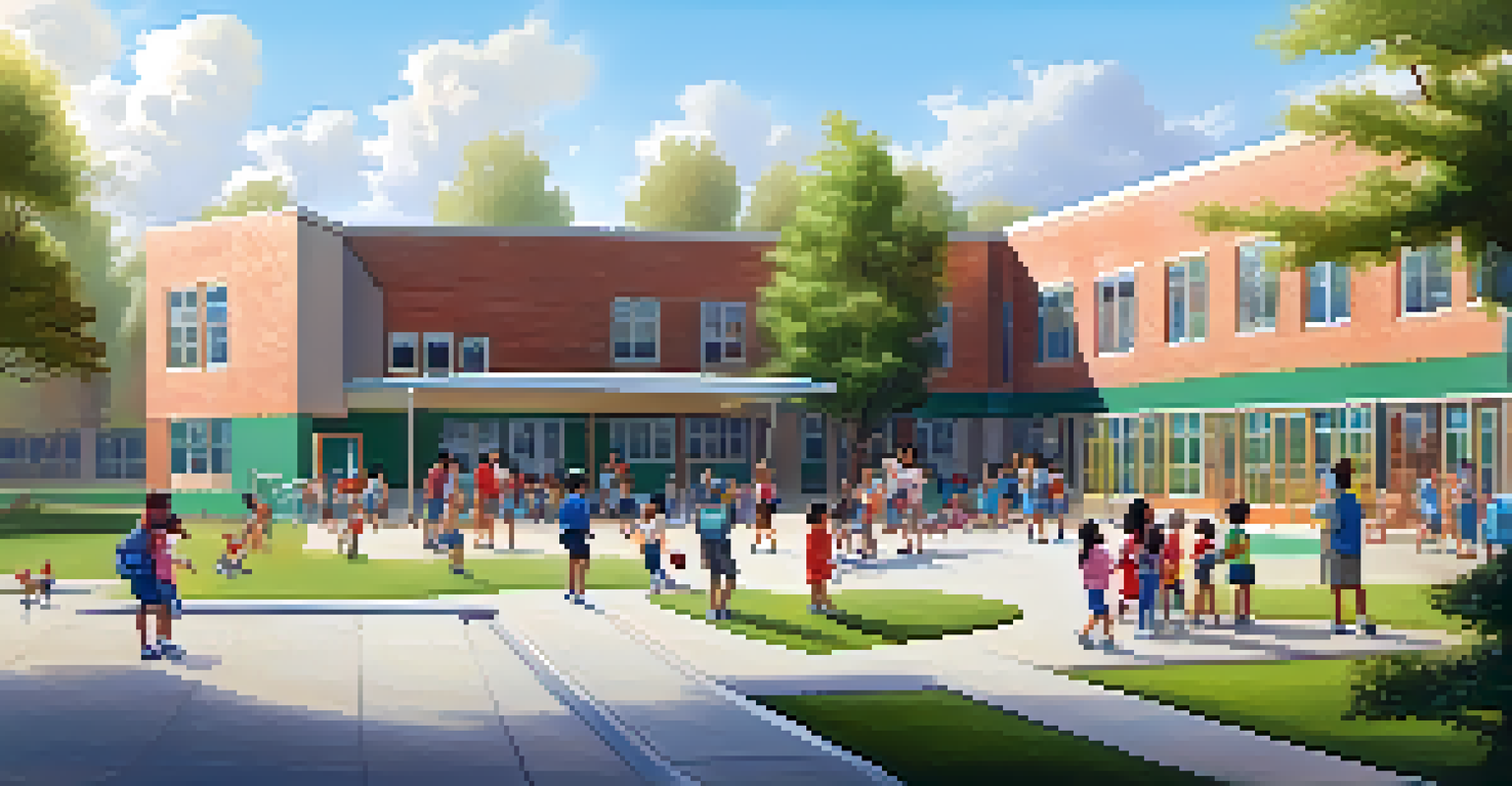The Role of Neighborhood Amenities in Real Estate Demand Trends

Understanding Neighborhood Amenities and Their Types
Neighborhood amenities refer to the features and services that enhance residents' quality of life. These can range from parks and recreational facilities to schools, shopping centers, and public transportation. Essentially, any feature that provides convenience or enjoyment adds to a neighborhood's appeal.
Location, location, location. The three most important factors in real estate are location, location, location.
For example, a neighborhood with well-maintained parks can attract families looking for outdoor spaces for play and exercise. Similarly, proximity to quality schools can significantly impact a family's decision to buy a home in that area. Thus, the right mix of amenities can make a neighborhood highly desirable.
In today’s competitive real estate market, understanding the types of amenities that resonate with potential buyers is essential. As preferences shift towards sustainability and community engagement, amenities that promote these values are becoming increasingly important.
The Connection Between Amenities and Property Values
There’s a strong correlation between neighborhood amenities and property values. Properties located near sought-after amenities often command higher prices and appreciate faster than those in less desirable areas. Buyers are willing to pay a premium for the convenience of nearby features.

For instance, homes near vibrant shopping districts or trendy restaurants typically see an uptick in demand. This is particularly true in urban areas where walkability is a significant selling point. Buyers view such amenities as enhancing their lifestyle, which in turn drives up property values.
Amenities Boost Property Values
Neighborhood amenities significantly enhance property values, making homes near desirable features more appealing to buyers.
Moreover, real estate professionals often highlight these amenities when marketing homes. This strategy helps potential buyers envision their future lifestyle, making the property more appealing and justifying a higher price point.
How Amenities Influence Buyer Preferences
Buyer preferences are heavily influenced by the available amenities in a neighborhood. Many homebuyers consider factors like access to grocery stores, entertainment options, and healthcare facilities when making their decisions. These elements play a crucial role in shaping their overall experience.
The best investment on Earth is earth.
For example, a young professional might prioritize neighborhoods with vibrant nightlife and fitness centers, while families might focus on schools and parks. Understanding these preferences allows real estate agents to better match buyers with properties that fit their lifestyles.
Furthermore, as remote work has become more common, the importance of home office space and local cafes has surged. Buyers are increasingly seeking neighborhoods that support their new work-life balance, highlighting the evolving nature of amenity desirability.
The Impact of Public Transportation on Real Estate Demand
Public transportation is a key amenity that significantly affects real estate demand. Areas with easy access to buses, trains, or subways often experience higher property values and more robust interest from buyers. This is especially true in urban environments where commuting can be a daily challenge.
For example, neighborhoods located near major transit hubs tend to attract a diverse range of buyers, from young professionals to retirees. The convenience of public transport allows residents to travel without relying solely on cars, making these areas more desirable.
Schools Influence Buyer Decisions
Local schools are a critical factor for families, with homes in well-rated districts often seeing higher demand and prices.
Additionally, as cities invest in expanding their public transit options, the surrounding real estate markets often see a positive ripple effect. Buyers recognize the long-term benefits of living near transit lines, further driving demand in those neighborhoods.
The Role of Green Spaces in Attracting Buyers
Green spaces such as parks and community gardens play a vital role in attracting homebuyers. These areas provide essential recreational opportunities and contribute to the overall aesthetic of a neighborhood. Buyers often prioritize access to nature, especially in urban settings.
Take, for instance, neighborhoods with well-maintained parks that offer walking trails and picnic areas. Such features not only enhance the quality of life but also foster a sense of community among residents. This connection can be a significant draw for families and individuals alike.
Moreover, the increasing awareness of environmental issues has led buyers to seek out neighborhoods that prioritize sustainability. Green spaces contribute to this appeal, making properties in such areas more attractive in the real estate market.
The Influence of Local Schools on Real Estate Trends
Local schools are among the most critical amenities impacting real estate demand. Families often prioritize neighborhoods with reputable schools, as education is a significant concern for parents. Properties located in well-rated school districts frequently see higher demand and property values.
For example, a home situated within the boundaries of a top-rated elementary school can attract numerous buyers, often leading to bidding wars. Parents are willing to pay more to ensure their children have access to quality education, making school proximity a powerful selling point.
Walkability Enhances Neighborhood Appeal
Walkable neighborhoods attract younger buyers by promoting a convenient lifestyle, which in turn increases property values.
In addition, even buyers without children recognize the long-term value of homes in good school districts. They understand that such properties tend to appreciate more over time, making them a sound investment.
The Effect of Walkability on Neighborhood Appeal
Walkability is increasingly becoming a sought-after amenity in real estate. Neighborhoods that offer pedestrian-friendly environments encourage residents to explore local shops, parks, and restaurants without relying on cars. This trend is especially popular among millennials and younger buyers.
For instance, a walkable neighborhood with cafés, boutiques, and parks nearby can create a vibrant community atmosphere. Buyers are drawn to the convenience and lifestyle that comes with living in such areas, as it promotes a healthier and more active way of life.

As a result, real estate developers are responding to this demand by designing communities that prioritize walkability. This shift not only enhances the neighborhood’s appeal but also contributes to higher property values.
Future Trends: The Evolving Role of Amenities in Real Estate
As we look to the future, the role of neighborhood amenities in real estate is expected to evolve further. With changing lifestyles and values, new types of amenities are emerging as priorities for buyers. Features such as co-working spaces, community gardens, and tech-friendly environments are becoming increasingly important.
For example, as remote work continues to rise, neighborhoods that offer flexible workspaces and networking opportunities are likely to gain traction. Buyers will seek out communities that not only provide housing but also support their work and social needs.
Additionally, as sustainability becomes a greater concern, amenities that promote eco-friendly living will be in higher demand. Neighborhoods that integrate green technology and sustainable practices will likely attract environmentally conscious buyers, shaping the future landscape of real estate.